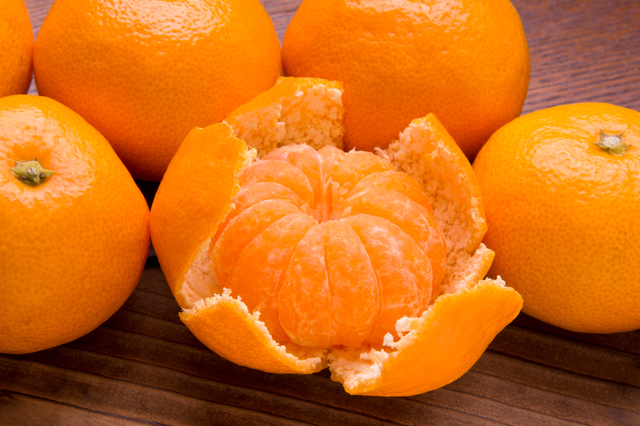
Don't Miss Them If You're In Japan! Eight Recommended Fruits
Japanese fruits are so popular that overseas restaurants go out of their way to procure them. Tours to orchards where you can pick the fruit yourself and eat as much as you want are becoming popular. Here are eight popular Japanese fruits!
This post may contain affiliate links. If you buy through them, we may earn a commission at no additional cost to you.
【Spring - Early Summer】Strawberries, Loquats
These two fruits are in season in the spring and early summer.
【Strawberries】
Strawberries start to show up in stores at the end of winter, and are sold primarily in March and April. Strawberries from Japan are popular for their sweet scent, large size, beautiful glossy appearance, and high sugar content. There are many varieties, and the most popular ones are the Amaou from Fukuoka and Tochiotome from Tochigi. They are easily purchasable at supermarkets and groceries.

【Loquat】
Loquats start to appear in April and are in peak season in June. It is a fruit with a beautiful skin that feels like velvet. The flesh of the fruit is very juicy and has a slightly sweet and refreshing flavor that makes it hard to stop eating. It is famous as a produce from warmer climates such as Nagasaki and southern Chiba.

Other seasonal fruits include apples, melons, and plums.
【Early Summer - Summer】Cherries, Peaches
These two fruits are in season from early summer to summer.
【Cherries】
Cherries start to appear in stores in May, are most abundant in June, and remain in stores till about July. Because they cannot be stored, they are seasonal fruits that are only sold for a limited time each year, and are associated with a particular season by the Japanese.
Because of their shiny and charming appearance, they are often likened to precious stones through such expressions as "red jewels" and "early summer ruby." Japanese cherries have a lighter and brighter color compared to American ones, and are characterized by a fresh acidity and sweetness. Major producers include Hokkaido and Nagano, with Yamagata producing the largest amount.

【Peaches】
Peaches can be found in stores primarily between June and September, and are in full season in July and August. There are different varieties, such as yellow peach and white peach, and Yamanashi, Fukushima, and Nagano are famous producers. Japanese peaches are characterized by a juicy and smooth texture, appetizingly plump roundness and sweet scent. It is a very familiar fruit to the Japanese that appears in a well-known fairy tale.

Other summer fruits include watermelons, melons, apricots, mangos, blueberries, and pineapples.
【Fall】Pears, Persimmons
These are two fall fruits.
【Pears】
Pears start to appear in stores in August, are in full season in September, and remain in stores till about October. While pears in many other countries are shaped like gourds, Japanese varieties are round. They taste different as well with Japanese pears being juicy, sweet and tangy and crunchy while overseas pears are rich, sweet and have a more syrupy consistency. They are produced around the country, but Chiba and Tottori are particularly famous producers. They are popular as a staple of the season, partly because of their affordability.

【Persimmons】
Persimmons can be found in stores mainly between September and December, and are in peak season in October and November. It is considered to be a fruit that represents the fall, with many Japanese associating the fall with persimmons. They are characterized by a subtle sweetness, a crunchy and pleasant texture, and high nutritional value. In addition to eating the fruit, the leaves are used in a variety of ways such as to wrap sushi and make tea.

Some other fall fruits include grapes, figs, and apples.
【Winter】 Mandarin Oranges, Yuzu
These two fruits that are in season in the winter.
【Mandarin Oranges】
Mandarin oranges appear in stores from October to February, with peak season being around December. The Satsuma mandarin is the most popular variety and is characterized by its juiciness, high sugar content, and deep flavors. It is a major fruit that the Japanese cannot go without in the winter. Famous producers are Ehime and Wakayama. In Japan, they are usually not cut with knives, but are peeled and eaten by hand. It is a very popular fruit, partly because they are so easy to eat.

【Yuzu】
Yuzu is a citrus fruit that appears around November and is in peak season in December. It has a bright flavor and scent and the flesh is rarely eaten as is. Instead, its juice and peel are often used to add flavor to dressings, various dishes, and drinks. It is also often used in sweets, and is a fruit that is indispensable in Japan\'s food culture. There is also a custom of taking yuzu baths with the whole fruit floating in the water, enjoyed as a winter treat.

Other winter fruits include apples, kiwis, and various citrus fruits.
Japanese fruits are generally fresh and high quality. They can be bought in supermarkets and specialty stores, and most fruits are also available at all-you-can-eat events at orchards, so give them a try while you are in Japan.
The information in this article is accurate at the time of publication.



